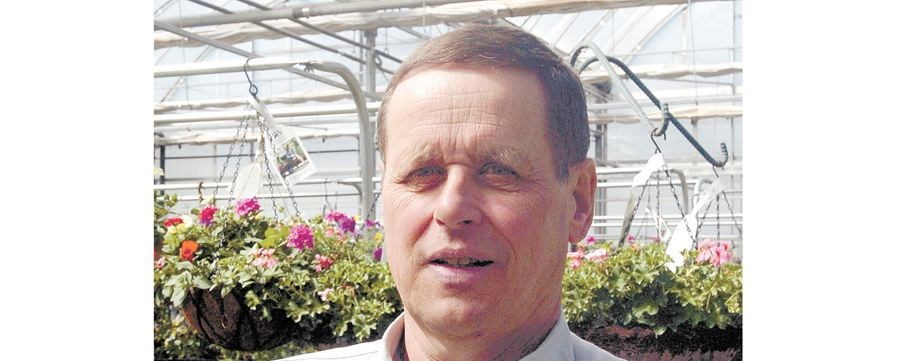Outdoor summer flowering hanging baskets have always been popular. They can instant add colour and fragrance to the home and landscape. Hanging baskets can be bought already made up or you can create your own. Creating your own hanging basket is not as hard as some people may think. There are a few basic steps to follow.
Choosing the container; When it comes to picking out a container, bigger is better. Bigger containers hold more soil, so do not dry out as quickly. Small containers will end up requiring more maintenance as they will need to be watered more often. Generally a pot should be at least 40 cm wide and deep. At the garden centre we use pots as large as seven gallon. These are the ones that hang in front of the store. When picking out a container, make sure that it has drainage so the excess water will drain out. Containers can be made out of different materials, such as wood, moss, coco-fibre, ceramic and plastic. The plastic pots tend to hold moisture best. To help retain moisture the other containers can be lined along the inside of the pot with plastic, but make sure that there is a hole in the bottom for drainage.
Soil, is very important in growing healthy plants and in turn having an attractive hanging basket. Do not go cheap on the soil. Choose a high quality potting soil such as an outdoor container/greenhouse mix.
Picking out the right plants for the right area will lead to a beautiful, successful hanging basket. An area that receives more than 6 hours of direct light is considered 'full sun'. If the area has less then 4 hours of direct daily sun it is considered 'full shade' and anything in between is 'partial sun/shade'. Once you have decided the growing conditions you can start to choose the plants. Over the past few years there has been lots of new annuals that are ideal for growing in hanging baskets and containers. 'Proven Winners' have come out with a long list of beautiful annuals that are ideal for container growing, as has 'Tried and True'. Many of these plants are low maintenance plants that are easy to grow and require no deadheading. If you are not sure about combining different plants in one hanging basket you can choose to plant a few plants of one variety in a pot. For example, 4-6 supertunia plants in a container, will fill out quickly and produce a beautiful hanging basket.
Once the hanging basket has been planted, give it a good thorough water. If you are planting it now, it will need to be placed in a protected area so that it is protected from the frost. A heated greenhouse would be ideal. Some gardeners will place the hanging basket outdoors during the day and bring it in at night, until all threat of frost has passed (mid to late May). Fertilizer is needed to keep plants healthy and growing. Give it a weekly application of a flowering plant fertilizer such as the water soluble 12-36-12. Check the hanging basket daily, making sure that it has enough moisture. Do not keep it too wet as this will cause the roots of the plants to rot. As the plants grow larger root systems and the outdoor temperatures warm up you will notice that the hanging basket will need to be watered more often. By the end of the season it will need to be watered once and sometimes twice a day.
To keep plants healthy, check them weekly for any pests or disease. Aphids can be a problem and if caught early enough are easy to control. Also remove any broken stems, or flowers or foliage that show signs of rot. Do not be afraid to trim the plants back if they become leggy. If cared for properly a hanging basket will look beautiful until the Fall.



